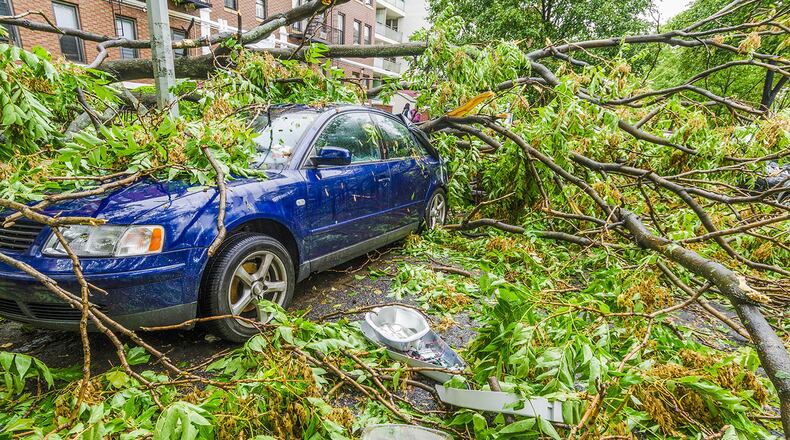Dealerships like gap insurance because compared with other aftermarket products they offer, it’s is relatively inexpensive. While extended warranties can run several thousand dollars, gap insurance usually sells for $350 to $800. Prices vary depending on the length and amount of the car loan.
Gap has appeal for car buyers because it protects against two factors they can’t control: the quick depreciation of a new vehicle and the method insurance companies use to determine how much to pay if a car is totaled.
How gap works
Most buyers know that their new car takes a serious depreciation hit in the first few years of ownership. What isn’t as widely understood is that unless a car buyer makes a hefty down payment to start the auto loan, chances are good that the vehicle will be worth less than what’s owed on the loan for several years. That’s especially true because loans include extra costs – taxes, registration and other fees – that don’t increase a vehicle’s value.
Say a shopper in California buys a new car for $25,000. Factoring in tax and registration, the “out the door” price would be about $27,500. Assuming the buyer made a 12 percent down payment, which was the average in 2017, the loan amount would be $24,200.
Most new cars depreciate about 20 percent as soon as owners drive them off the lot. In this example, the initial depreciation would be $5,000, dropping the car’s value to $20,000. That means the vehicle is worth about $20,000 but the loan balance is $24,200. In car industry jargon, the buyer is $4,200 “upside-down.”
If the vehicle was in an accident soon after purchase and declared a total loss, an insurance company would likely pay a settlement of somewhere around $20,000 – the vehicle’s value. But the owner would still owe $4,200 on the loan. Gap insurance would pay the difference.
Being upside-down in a car loan is fairly common. Nearly one-third of people who traded in vehicles last year were in that situation, and the average shortfall was more than $5,000.
Is gap insurance right for you?
If you’re making a down payment of more than 25 percent on your next vehicle, or if your insurance policy will replace your car if it’s declared a total loss in the first few years of ownership, you have little use for gap insurance. But if you fall into any of these six categories, you might consider getting it:
- You're taking out a car loan that's longer than 60 months. Lengthy terms mean it takes longer to reach the point where the loan balance and the vehicle's value match.
- You've traded in a vehicle with negative equity, meaning you owe more on it than it's worth, and you're rolling that negative equity into your new car loan. Just like the taxes and registration fees in the earlier example, adding that negative equity to your new loan will widen the gap between what you owe on the car and its value.
- You're buying a car that traditionally loses value quickly. Models that have lots of options, like luxury vehicles and domestic sedans, fall into this category.
- You intend to drive lots of miles in a short amount of time. Higher-than-average miles mean greater-than-average depreciation.
- Your loan has a high interest rate, which means it will take longer to reach the break-even point in your loan.
- You're buying or leasing a car with little or no down payment.
Other sources for gap coverage
Dealerships aren’t the only place to get gap insurance. Some credit unions and auto insurance companies also offer it. If you think gap coverage might be right for you, call a credit union or auto insurance provider to see if it offers the coverage and how much it charges. Do this before you start working with a dealership so you can easily compare prices and pick the option that works best for you.
It’s natural to be skeptical of a sales pitch in a car dealership. But if you’re buying a car with little or no money down, gap insurance may be good to have. Do some comparison shopping before you buy.
About the Author
